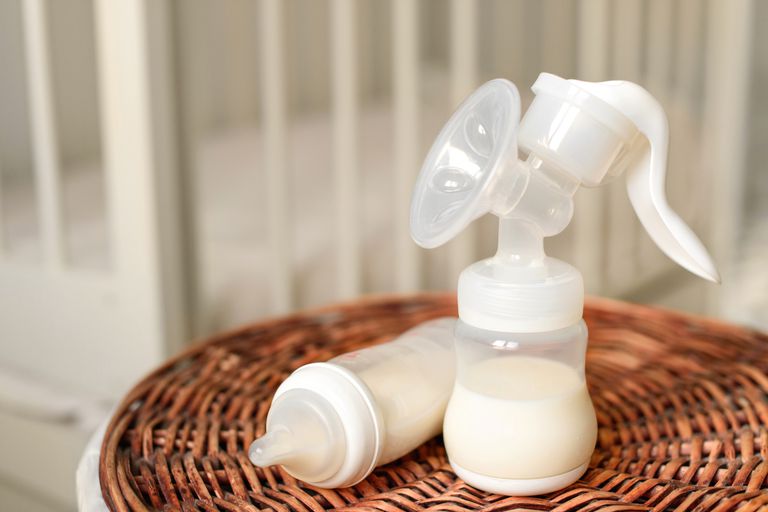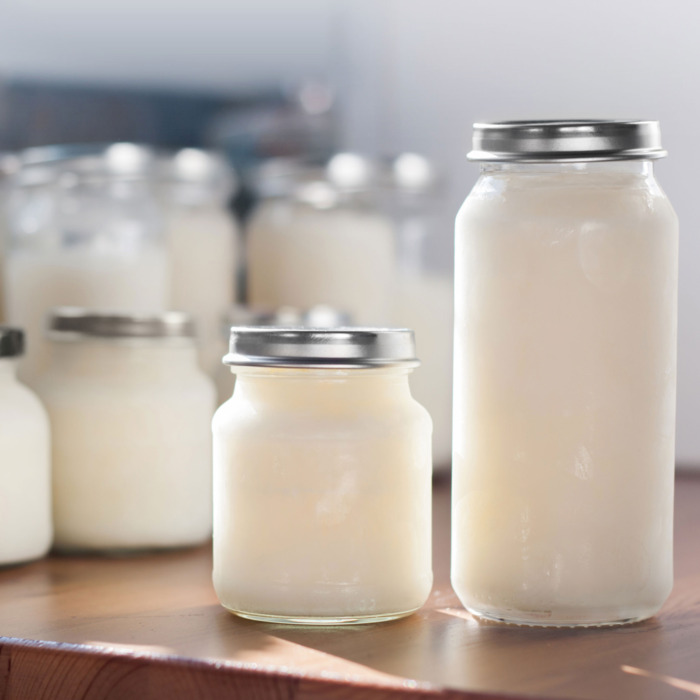It may be hard to believe, but the milk of a nursing mother varies with the duration of the pregnancy, the time of day, and the age of the baby. Some pregnant women already at the 16th week of pregnancy notice that milk grubs out of the breast. Then the question arises, how to distinguish colostrum from milk in women.
general information
This is a physiology associated with hormonal changes during this period of pregnancy. In general, there is an opinion that if this happens, a woman will have less milk after childbirth. Do not panic, however, because this is not true. If this bothers you, just insert the inserts into the bra and not be nervous.

Colostrum
Colostrum can appear in the third trimester of pregnancy and only within 3-4 days after birth. Displaces its transitional milk. Those who wondered how to distinguish colostrum from breast milk should bear in mind that the first is yellowish, sticky and looks like some kind of pulp coming out of the chest in a small amount.
Do not be upset that the child does not eat up. For him, such an amount of food is enough. There is little colostrum, but it is extremely nutritious. It contains a lot of protein, minerals, enzymes, antibodies that have anti-inflammatory effects. The difference between colostrum and breast milk is that the first acts as the most mild laxative that helps the baby acquire the first stool. This is essentially a vaccine for the baby. Colostrum covers the walls of its gastrointestinal tract, preventing harmful bacteria from multiplying. It has many more benefits that are currently in the research process. So the differences between colostrum and milk will only be established in the future.

Transitional Milk
The next variety of breast milk is a transitional form. At this stage, the woman feels that her chest is swollen, became heavy. If she wonders how to distinguish colostrum after birth from transitional milk after childbirth, she should keep in mind that the second will be more watery. He has a transparent color.
Milk of this form contains a large amount of antibodies and protein. It is then that mothers most often begin to fatten their children, thereby violating lactation. During this period, children are more likely to reach the chest.
Mature
Mature milk stabilizes from 2-6 weeks after birth. And at this stage, the woman stops wondering how to distinguish milk from colostrum. This is a mature bluish tint. This liquid contains less protein. Often you hear: if you leave breast milk in a container and cream does not form from it, then the liquid is not thick enough, the baby does not overeat. This is a false belief. It must be remembered that human milk is intended only for a small child. The female endocrine system throughout the pregnancy adapted it quantitatively and qualitatively for the baby.

Composition change
Mother's milk changes during one feeding. Milk of the first phase is very watery, contains more proteins, lactose, sugars, mineral salts and water. And milk of the second stage includes, in addition to the components of the first phase, much more fat.
The properties
Mother’s milk is the best source of nutrients for development and growth for the baby. This liquid is best suited to the needs of the baby. It affects hormonal balance and the immune system. The assimilation of nutrients from mother’s milk is much higher than in the case of feeding the baby with mixtures. The composition of breast milk is not constant and varies depending on the stage of lactation, the time of feeding, the duration of feeding and the strength of absorption of the baby. For this reason, women are wondering how to distinguish milk from colostrum, very often.

Appearance
Colostrum is a thick, yellowish liquid, sometimes transparent. This is the so-called first milk. Colostrum looks like cream, it is rich in protein, vitamins and immune bodies. It destroys pathogens. Contains immunoglobulins against polio, influenza, Salmonella bacteria and numerous viruses. During the first days after birth, its amount can reach 100 ml.
Those who are wondering how to distinguish milk from colostrum should bear in mind that mature milk appears about a week after delivery. It contains much more, and the calorie content of food is the most important characteristic at the end of feeding.

Structure
The main component in breast milk is casein. It is completely and fairly easily absorbed by the body of the child. Due to the fact that casein is rapidly excreted, babies become hungry faster than babies who are artificially fed. In the early days of lactation, human milk contains a lot of cystine and taurine, which are necessary for the development of the brain of the newborn. The protein content in milk decreases during the entire period of feeding, therefore, about the sixth month of life, the child should begin to give a little feeding.
The composition of this fluid provides the absorption of fat-soluble vitamins. It helps maintain the structure of cell membranes and nerve cells in good condition, and promotes the development of vision in a newborn baby. Breast milk is replete with polyunsaturated fatty acids, necessary for the proper development of the brain, as well as increasing the baby's resistance to infections. The concentration of fat is the smallest at the beginning of feeding, and increases at the end of the baby's sucking breast. Long breaks between feedings reduce the amount of fat in milk.
Milk sugar, lactose provide the child with energy. Breast milk contains much more lactose than, for example, cow's milk. Lactic acid bacteria during breastfeeding provide the best protection against infections of the baby's gastrointestinal tract.

Milk formulas contain much more compounds than breast milk, so babies who are fed through a bottle tend to retain fluid in the body. Trace elements from the mother’s food are optimally absorbed by the child. Breast milk contains little iron, and the lactoferrin involved in it binds the elements in an optimal way so that the baby can absorb them. In mixtures, lactoferrin is not noted, therefore, an excess of iron in the body can contribute to the development of bacteria. In the first three months of breastfeeding, vitamin K should be given to the baby.
The immune forces of the child in the first year of life are still immature. Antibodies obtained after childbirth quickly decompose. Mother's milk is the best protection against infections for the baby. Colostrum contains a large number of antibodies that protect the mucous membranes of the gastrointestinal tract, respiratory and urinary tracts. Therefore, those who wondered how to distinguish milk from colostrum should not worry. Nature provided for virtually everything.